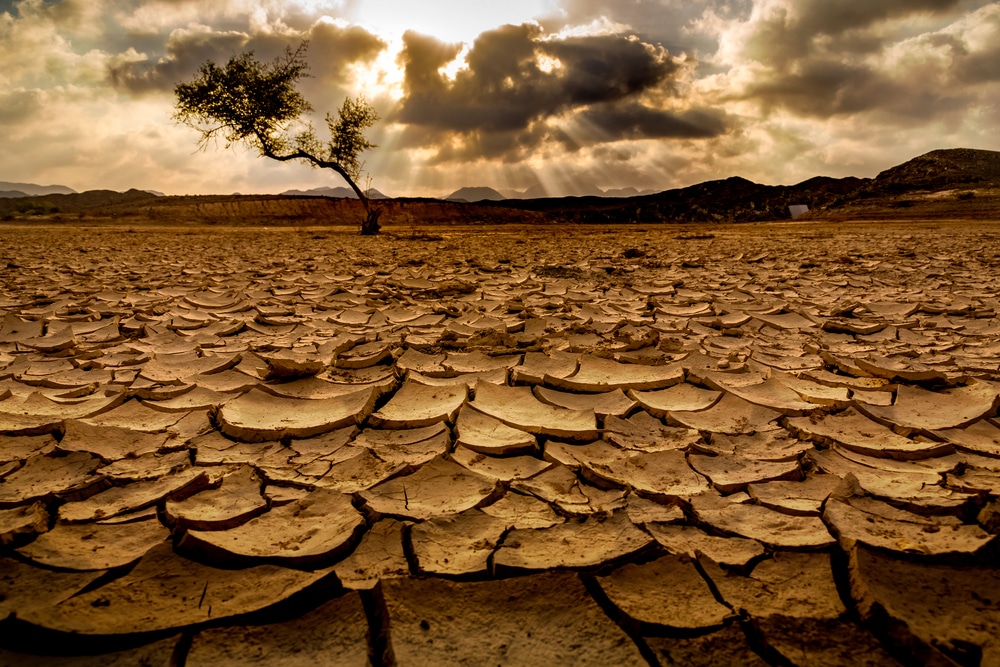(ETH) – California has just shut down a major hydroelectric power plant at Lake Oroville as water levels fell near the minimum necessary to generate power, according to CNBC.
It’s the first time the state has shut down the Hyatt Power Plant due to depleted water levels since the plant went into operation in 1967. The loss of power could fuel even more rolling blackouts this summer as the state grapples with a historic drought and record-breaking heatwaves. Officials said the record-low water levels at Lake Oroville, a man-made water reserve in Northern California, are a result of the drought exacerbated by climate change.
Though California consistently experiences drought, climate change fueled high temperatures and dry soil that significantly reduced water runoff into the reservoirs this spring, resulting in the lowest levels ever recorded at Lake Oroville, officials said Thursday. The Mercury News stated, “This is just one of many unprecedented impacts we are experiencing in California as a result of our climate-induced drought,” said Karla Nemeth, director of the state Department of Water Resources, which owns the dam.
On Thursday, the reservoir was only 24% full, having fallen below an all-time low record set in September 1977. The lake level has dropped a stunning 250 feet in the past two years. The water level has fallen below the intake pipes that normally send water to spin six huge turbines at the Edward Hyatt Power Plant in the bedrock under the dam. The loss of Oroville’s electricity won’t by itself cause blackouts.
Even when the lake is full, the Hyatt power plant, one of the largest hydroelectric plants in the state, provides about 1% of California’s peak statewide electricity demand. Meanwhile, according to the Associated Press, a thick, white band of newly exposed rock face stretches high above boaters’ heads at Lake Powell, creating a sharp contrast against the famous red desert terrain as their vessels weave through tight canyons that were once underwater.
It’s a stark reminder of how far the water level has fallen at the massive reservoir on the Utah-Arizona border. Just last year, it was more than 50 feet (15 meters) higher. Now, the level at the popular destination for houseboat vacations is at a historic low amid a climate change-fueled megadrought engulfing the U.S. West. At Lake Powell, tents are tucked along shorelines that haven’t seen water for years.
Bright-colored jet skis fly across the water, passing kayakers, water skiers, and fishermen under a blistering desert sun. Closed boat ramps have forced some houseboats off the lake, leaving tourists and businesses scrambling. One ramp is so far above the water, people have to carry kayaks and stand-up paddleboards down a steep cliff face to reach the surface.
Meanwhile, The eastern Arizona reservoir that has provided much water for residents is drying up, leaving empty the canals and ditches. Bigger-than-usual summer rains did not prove ample to rescue dead fields. According to Yahoo News, Across the U.S. West, shifting climate patterns are wreaking havoc.
An early start to fire season is scorching rural Oregon and parts of Northern California. Record temperatures have led to the deaths of hundreds of residents of Seattle and Portland, Ore. Lake Mead, the massive Colorado River reservoir outside Las Vegas, is at its lowest point since its 1935 federal construction, threatening water supplies to Arizona, Southern California, Nevada, and Mexico.
“Arizona is pretty much an irrigated state and we’ve managed our water resources generally well,” said Stephanie Smallhouse, a fifth-generation cattle rancher on the far outskirts of Tucson who is the president of the Arizona Farm Bureau. “But it’s near impossible to manage yourself out of a drought.”
In Northern Mexico, tens of thousands of cattle are starving death according to the Los Angeles Times, who stated: In the parched hills of southern Sonora, Marco Antonio Gutierrez paced around a clearing, counting the dead. There were seven rotting carcasses — jutting ribs and shriveled hides — and two sun-bleached skulls. Nine cows, felled by heat and hunger.
“There’s nothing for them to eat,” said Gutierrez, a wide-brimmed hat shading his downcast eyes. “There used to be big ranches here. Now it’s pure sorrow.” Two years of extreme drought have turned large stretches of northern Mexico into a boneyard.
Between starvation and ranchers forced to prematurely sell or slaughter their livestock, officials say the number of cattle in Sonora has dropped from 1.1 million to about 635,000. It’s an unimaginable loss for a state that is world-famous for its high-quality cows, and where beef is not just a central part of the diet and economy but also a tradition that binds families together.










